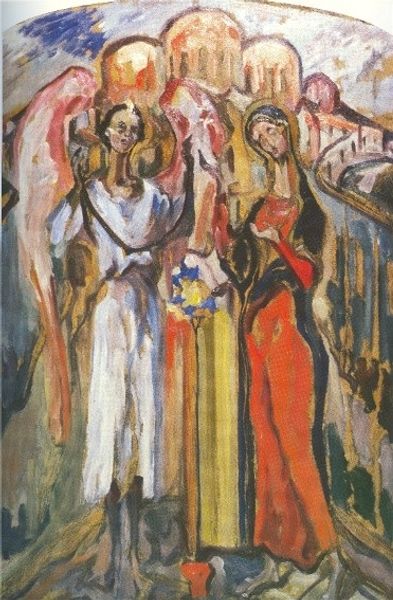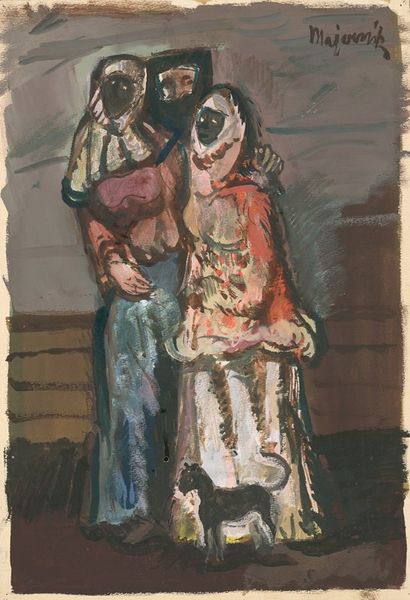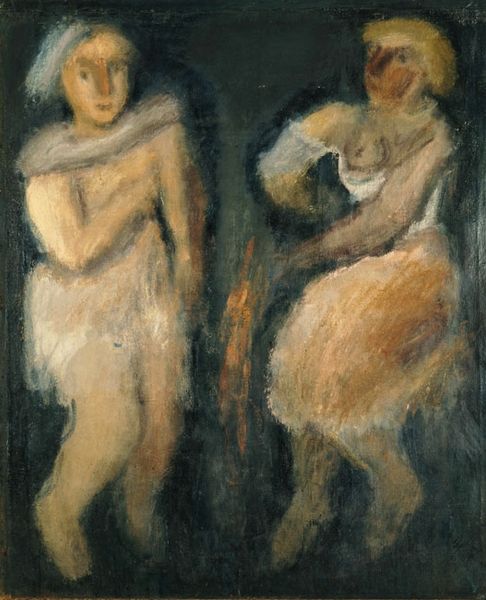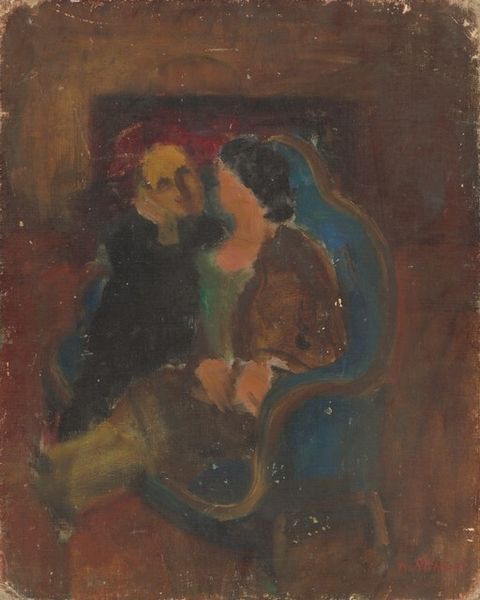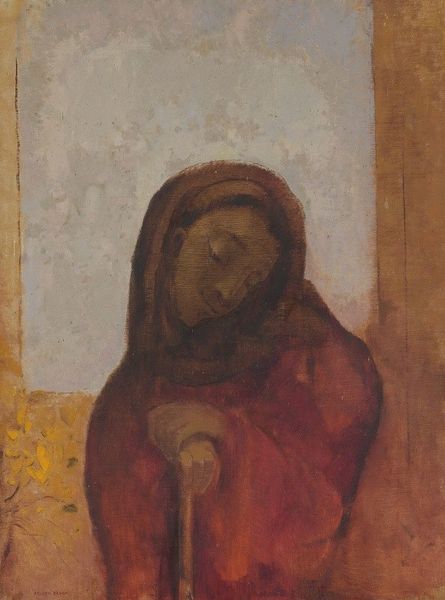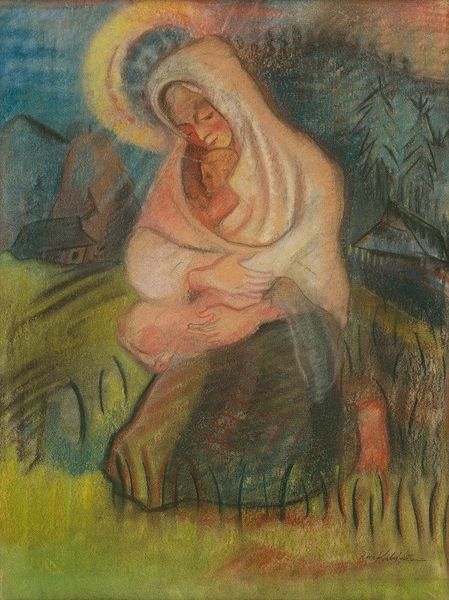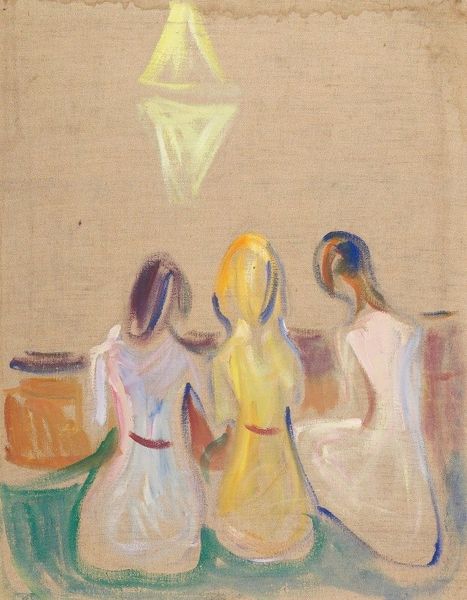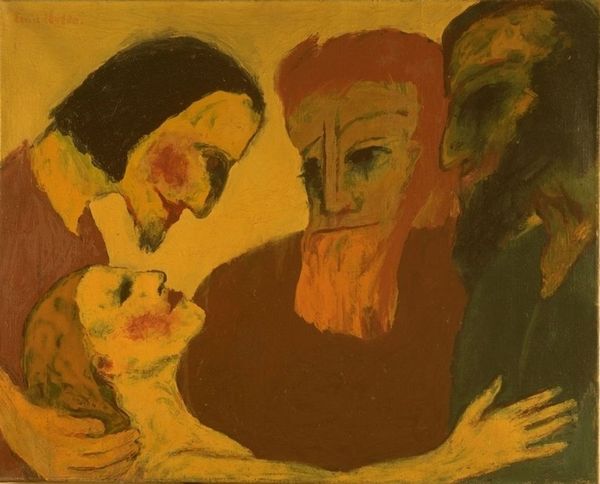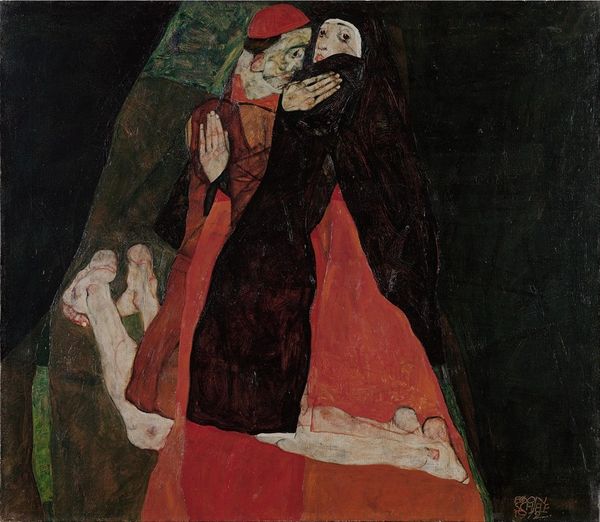
Dimensions: overall: 58.4 x 48.3 cm (23 x 19 in.) framed: 70.2 x 61 x 6.2 cm (27 5/8 x 24 x 2 7/16 in.)
Copyright: National Gallery of Art: CC0 1.0
Curator: Today we're considering Mark Rothko’s oil painting, *Untitled (three women)*, from around 1935. It’s an early figural work, quite different from his later color field paintings. Editor: Immediately, I'm struck by the rather melancholic mood it evokes, particularly through that bowed head of the woman in white. The brushstrokes appear thick and hurried, adding a raw, vulnerable feel. Curator: Agreed. Structurally, the composition relies on a relatively simple arrangement. We have three women compressed into a shallow space, each differentiated through color—yellow, white, and brown—against that dominating blue backdrop. Editor: It’s interesting how even in this earlier work, Rothko seems concerned with exploring psychological space. Considering the time, the mid-1930s, and the increasing unrest in Europe, are we looking at a comment on women’s experiences of anxiety? Does the painting hint at feelings of uncertainty that resonated in an era defined by fear? Curator: Possibly, but focusing solely on context risks overlooking the formal dynamics at play. Consider the interplay of light and shadow, the strategic use of color. Notice how the white dress, almost sculptural, reflects light that guides the eye around the whole image. It is almost a spotlight. Editor: Yes, the technical elements contribute immensely, but what do these visual cues communicate? Isn't it vital to unpack who has traditionally been at the forefront of art, and how figural representation perpetuates—or even subverts—that control, consciously or unconsciously? Does the expressionistic distortion of the figures mirror societal unease felt acutely by women during this time? Curator: These figures certainly exhibit Rothko’s growing tendency to simplify form in favor of emotional intensity, something that carries on even through his turn towards abstraction. The very absence of a discernible narrative gives rise to multifaceted readings and varied emotional reactions. Editor: Which is why it is so compelling. Understanding both the visual language *and* the historical implications unlocks the artwork’s fullest resonance. Seeing those expressionistic brushstrokes, through a historical context, brings an urgency that's undeniably poignant, reminding us that this work exists as both a form and record. Curator: I can appreciate that position. I guess that through close examination, Rothko asks us to bring both an attuned eye and awareness to decode the many subtle facets that constitute this oil painting. Editor: Absolutely. A continuous dance between art history and the present!
Comments
No comments
Be the first to comment and join the conversation on the ultimate creative platform.
